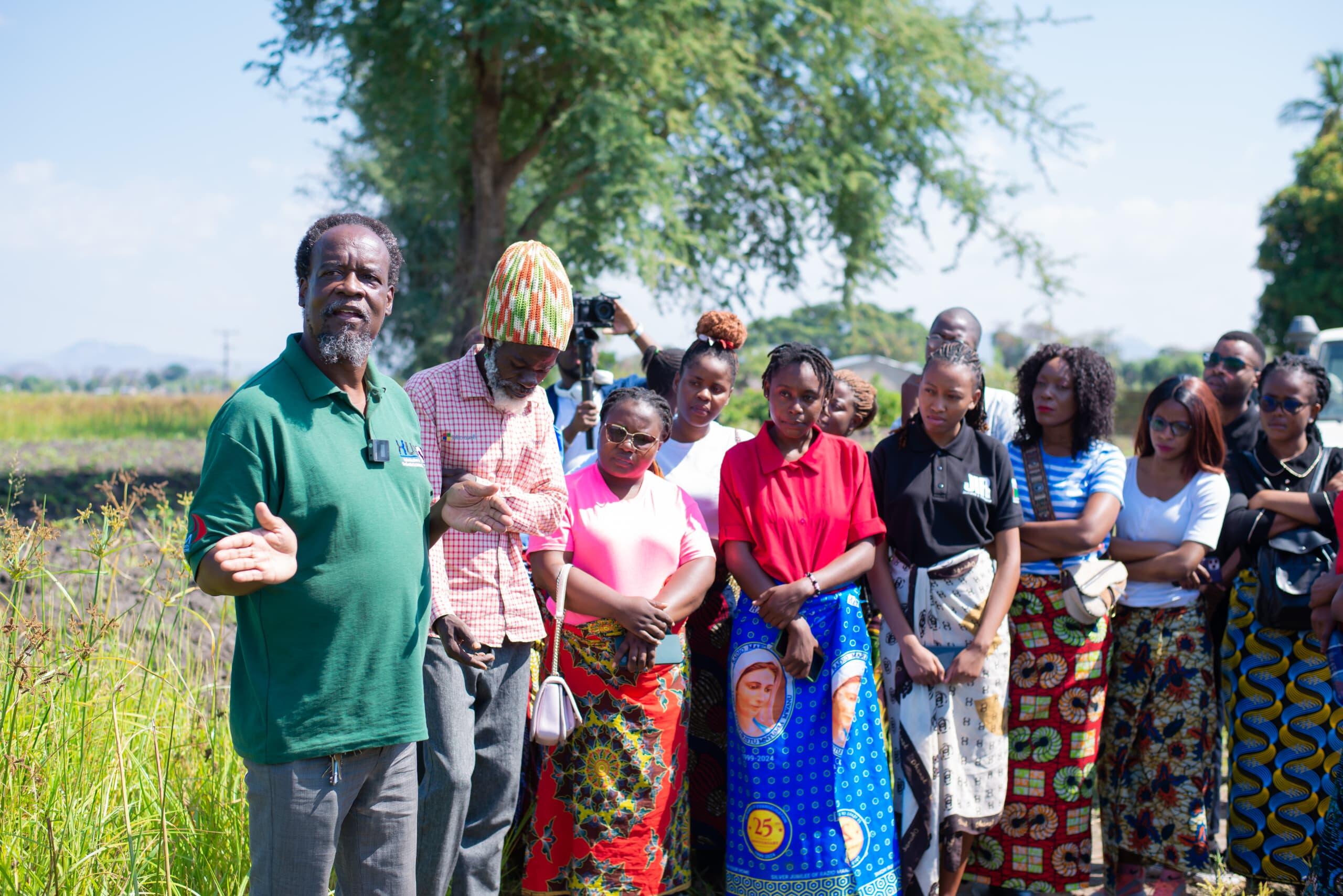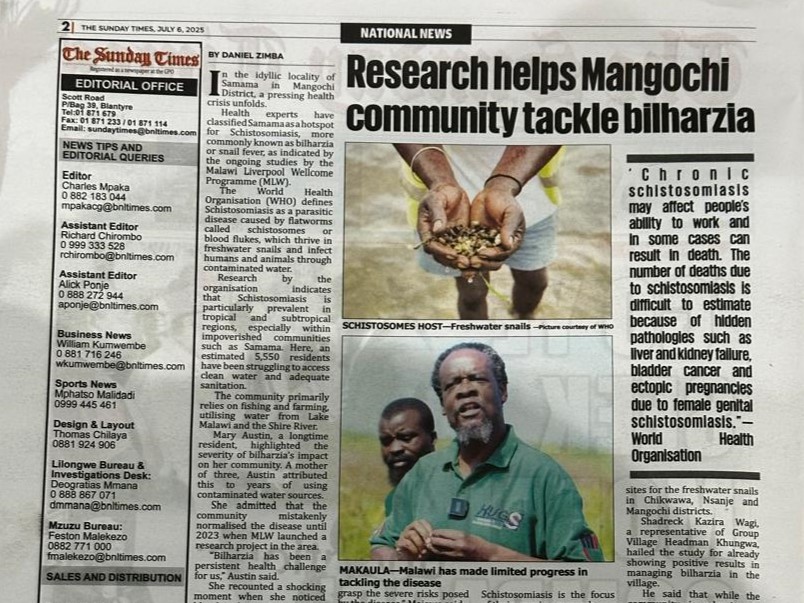
As the HUGS investigation nears completion, it is essential that we share our findings with the communities who allowed us to conduct our clinical research in the area they call home. Foremost, we do this to empower them, sharing knowledge of schistosomiasis so they can make better, more informed choices for their health and well-being. We do this with individuals, households, villages and towns, all the way up to the National Schistosomiasis Control Programme, as overseen by the Ministry of Health.
Helping the HUGS team with this was Peter Makaula, who, in liaison with the MLW Communication and Public Engagement Department, conducted an on-site visit to Samama in Mangochi District. There, with community leaders and several health system stakeholders, we had in-depth discussions on the regional importance of schistosomiasis. We emphasised the importance of a ‘One Health’ approach and shared new findings on how schistosomiasis is interacting with livestock and people in aquatic environments.
Peter Makaula has also published an academic paper in Acta Tropica, which recorded local communities’ knowledge, attitudes and practices, revealing essential knowledge gaps. Many of the people he spoke to did not know that schistosomiasis (Bilharzia) could occur in livestock. Moreover, the paper details the modest antiparasitic effect within local communities of biannual deworming, a frontline tool, as recommended by the WHO, for progress in the elimination of schistosomiasis as a public health problem.
To reach a national audience, we also spoke to the Malawi Times Newspaper about our research, taking their journalist on a walking tour of an area where people, livestock, and freshwater snails share water sources. Here, largely unseen schistosomes intermingle, allowing the transmission of newly evolved and evolving hybrid worms. In this location, and despite HUGS’s best efforts to administer praziquantel deworming treatments twice a year, infection control was increasingly difficult, due in part to an absence of schistosomiasis control in livestock.

At all dissemination levels, from the Ministry of Health to affected communities, a broad conceptual change in understanding of the close and active links between human and livestock schistosomiasis is needed. Although it has taken HUGS three years to collect and disseminate its salient findings on hybrid schistosomes, this local community engagement marked a significant first step in a longer journey towards eliminating schistosomiasis.
Pertinent aspects of the HUGS investigation are soon to be published in Special Issues of the scientific journals Philosophical Transactions of the Royal Society, B and Parasitology, as well as to be presented at international medical conferences. The latter includes the 200th Anniversary of the Birth of Theodor Bilharz, the discoverer of the disease, at the Institute of Tropical Medicine, Travel Medicine and Human Parasitology, Tubingen, Germany.